The concept of Thali – which literally means plate, typically a round steel plate with tiny steel bowls arranged around the rim – is one where you get fed bottomless servings of daal, vegetables (and in some rare cases, meat), rotis or puris, rice and dessert, all in the comfort of your own chair, without having to flex a muscle to make it across to the buffet line. We’re not talking lavish gourmet food here. An authentic thaali is not about the ambiance or about the exotically spiced couscous, simmered in clarified butter and tossed with almonds and mustard seeds (which incidentally, was a phenomenal breakfast find this morning at Indigo Deli in Colaba, Mumbai. Thanks Rashu, you ROCK.). It’s about simple, unpretentious steaming hot home-cooked food, just like the kind that an Indian granny or mom would lovingly ply you with after she’d suggested, enticed, persuaded, COMMANDED, that you stick around for lunch, else you’d be committing the greatest offense to her legendary cooking skills.
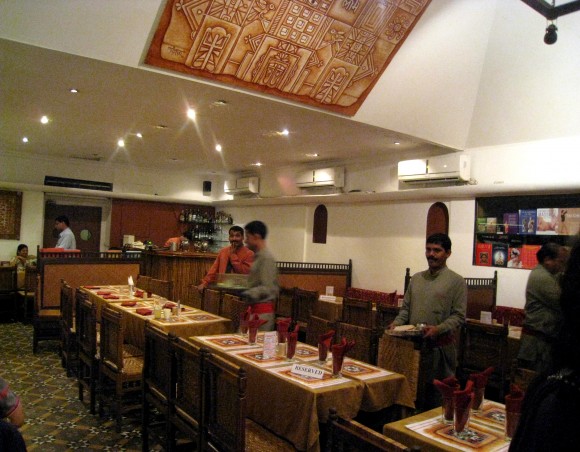
Thali at Chetana lived up to that no-frills, simple, but deeply satisfying home experience. Partly because I picked the ‘light’ thali – a version of the regular thali recommended to people who want a non-commercial, authentic taste of Indian home cooking (ie. not laden in the oil, cream and the mountain of spices that goes into your standard Western experience of chikken tikka masala or saag paneer. Hail New York.) Though the term ‘light’ is all relative – in Indian thaali lingo, that doesn’t mean anything less than appetizer munchies, 5 bowls of curry / veggies and side salad and fruits and three different types of chapatis and another three types of rice and dessert. And did I mention dessert? All unlimited servings of course.
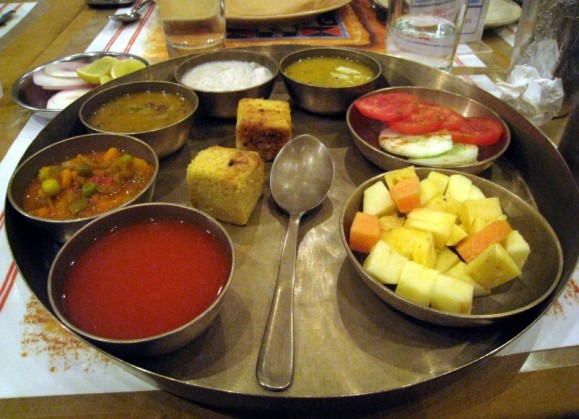
So here’s my ‘light’ thaali – starting with the bowl from the left of the spoon: sweet-sour tomato soup, mixed veggie curry, kala channa (black chickpeas) soaked in tamarind-flavored water, a thicker version of kadi (a yoghurt and gram-flour-based dish), yellow daal, and a basic salad and bowl of fruit. Each of the dishes had a mild sweet flavor, very traditional to local Gujrathi food which is usually laced with generous amounts of gur or jaggery (though Chetana’s also had other types of Rajasthani or South Indian thalis where the dishes would have been on the spicier end of the spectrum.)
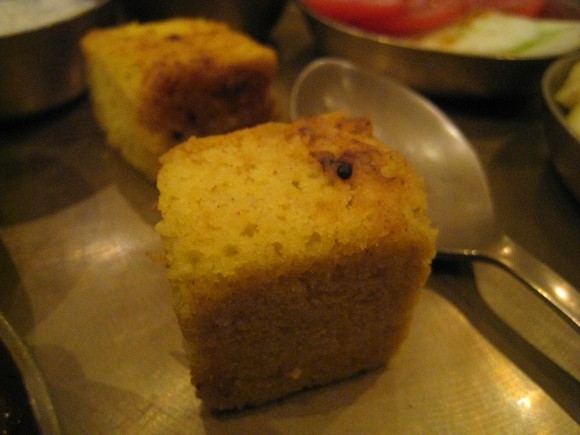
Those soft, spongey cubes in the center of the thaali are called Handvo, a Gujrathi savory cake made out of lentils and wheat. Tasted wonderful when dipped in sweet-tangy tamarind chutney, exactly the kind of thing I’d love to take a big bowl of into a movie theater and munch on while everyone else is digging into their usual buttered popcorn tubs or plastic nachos and cheese trays.

Three different types of freshly made roti, smeared liberally with ghee – regular chapati made out wheat flour, and then bajra (english: pearl millet) and jowar (sorghum). In contrast to the mainstream garlic naan phenomenon, I think bajra and jowari are more of an acquired taste, with an earthy, rustic taste that reminds me of wet monsoon mud and age-old kerosene stoves in farming villages tucked away outside the bustling city of Mumbai.
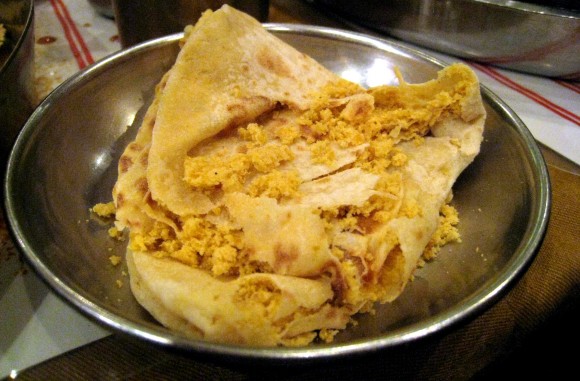
The final stretch, dessert…alternating mouthfuls of silky roti-like layers of puran poli, with sweet crumbly jaggery stuffing, and creamy mouthfuls of aam ka ras (aka mango pulp). I’m usually not a fan of Indian desserts, but this one is right up there with molten chocolate cake for me.
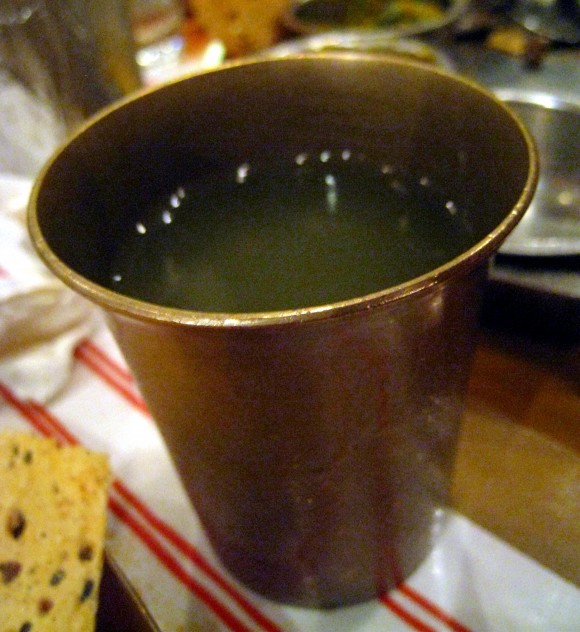
I washed it all down with Jal Jeera, a sour and salty digestive drink with tamarind, black salt, ginger, and bunch of other tummy-settling ingredients.
Frankly, I’ve had better thalis back in Dubai (for instance at Rajdhani, incidentally first started in Mumbai before stepping foot in Dubai), or in Hyderabad (spicy Andhra thali in Jubilee hills) but Chetana’s has felt the closest to homecooked Indian food than any other thali joint I’ve visited.
Chetana Veg Restaurant
Phone: +91 22 22844968 or 22824983
34 Rampart Row, Opposite Jehangir Art Gallery, Kalaghoda, K Dubash Marg, Fort, Mumbai

Wow – cant wait to try it out…!